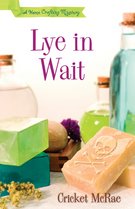I’ve been outside a little every day, trimming and planting and pulling weeds. The weeds take the most work. I have a lot of them.
My work in progress was full of weeds, too. I started it during NaNoWriMo (National Novel Writing Month) in November but stopped after 25,000 words when I realized I liked my characters and my plot too much to push through to the challenge goal of 50,000 without doing a little more planning. The story was too complicated, I had too many names to keep track of without a cast of characters, and my timeline was already screwed up.
So I dropped the NaNoWriMo challenge and went back to the beginning. After submitting a few of the chapters to my critique group and enjoying a brainstorming sessions with my creative compadres, I developed a new vision for the novel.
And was still able to keep my basic story idea intact.
When I rearranged chapters and scenes and began to read analytically against comments made in my group’s critiques, I saw old patterns emerging. Bad habits are hard to break.
These are the sloppy things I always do in my first draft, so as a committed pantser, I wasn’t very surprised. I usually charge through that first draft to the end and wait until a revision and self-editing cycle to “fix” the problems. Because I need to rewrite and expand that first 25,000 into about 50,000 before writing the rest of the story, I’m reading each page carefully…and fixing things as I go.
Cut and paste a section here. Add a scene there. Cross out unnecessary words. Search for “shrugging” and “nodding” and “thinking for a moment.” Catching those sections where I’ve revealed information too soon or too late, and moving those passages to their proper location. Turn narrative scenes into dialog and action scenes. And, believe it or not, I’m preparing a chapter outline of important scenes for the whole novel before I write the third act.
Can this method work for me in the long term, or is this a one-time treatment because of the need to rework those first pages? I’m not sure yet.
But I know one thing for sure. If I waited until the first growing cycle was over in my garden before I started pulling weeds, I’d have a much bigger job on my hands, and the weeds would have stunted the growth of some good plants.
Maybe that’s why I have the full first draft manuscript from NaNoWriMo 2011 still sitting on my desk, along with all of my group’s critiques, and haven’t done a thing with it. I’ll get back to it eventually, but I may have finally learned my lesson about plotting versus pantsing because that revision is going to be a big job.
It’s never to late to learn new tricks, never too late to try a new process. We’ll see how it goes.







I’ve changed my process a little too but I don’t make major changes until the second draft. I’ve been pulling weeds outside too.
Today’s chore is to cut the tall grass that grows along that dog run fence by my garden boxes. The roots are spreading and invading my garden. Will this never end?
So the other chore is to continue the cut and paste as I move some scenes around and expand others in the manuscript. I don’t think this chore is going to ever end either.
Sounds like you are willing to do the work when it needs to be done. I will need to learn this lesson (both for my gardening and my writing).
Weeding, yes! Half the battle is in weeding out the excess verbiage and clunky phrases, the scenes that don’t work. Too bad we can’t just spray with weed killer to get the job done because doing it by hand is tough work.
love your analogy! I like to say pruning!
My manuscripts are all full of weeds. 😉
Pat – I love the analogy of pulling weeds and fixing manuscripts. I’ve found that if you run into a little problem early, that’s a sign that if it’s not dealt with, it could grow. I like to nip it in the bud, to be honest. I don’t always manage it, but it helps to at least have it as a goal.
I’m going to guess that the book itself dictates the way in which we write it. I wrote 50 thousand on a mystery three or four years ago and gah! I still can’t untangle it. Two years ago in June I did the BuNoWriMo and kept on writing until I had 80 thousand words. I have been working on it since but not because of any problems with how that first process went. I’m just doing what I really hope is the polish draft now and I’m pleased as punch. I think I’ve done it every PANTSER way possible. I even pants them and then do extensive outlining and beat sheets after I write the first hot draft. All good and I always think ‘dang – now I’ve got it’ but I really think each book gets its own method.
Thanks, Madeline. I guess there really is no right way to write…just the way I’m doing it at the moment.
Alex, they were already mountains at 25.000 words. I’ve managed to squish them down into hills.
Fixing the small problems before they became mountains sounds like a good idea to me. If it’s working, keep at it!
My writing process is always evolving – from year to year, from project to project. I’m learning to just go with it – the story knows what it wants to do, to be. Fingers crossed. 🙂
Good luck with your project!
Madeline @ The Shellshank Redemption